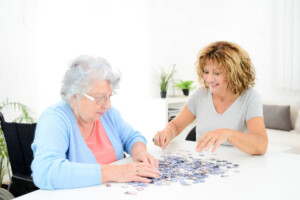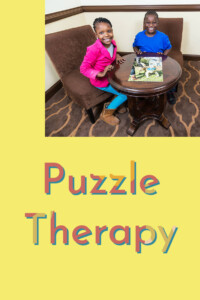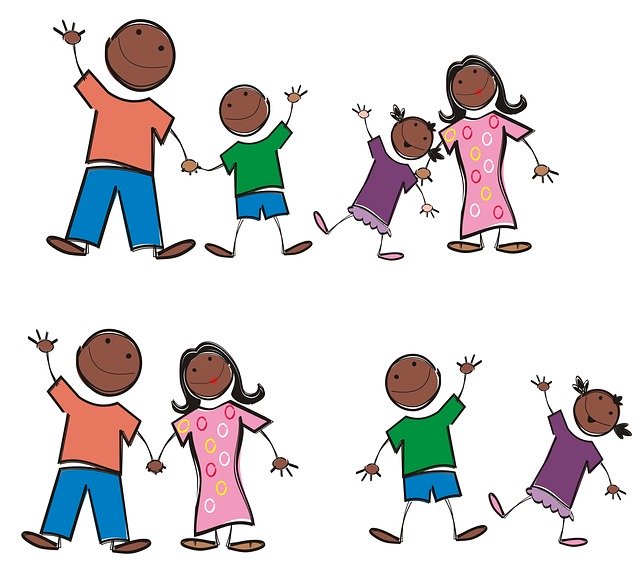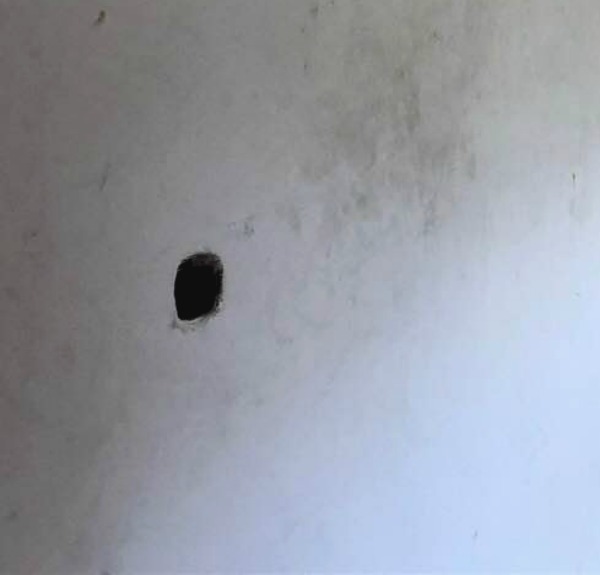A Puzzle a Day

puzzle therapy.
Our Intensive Care waiting room had a table in one corner with puzzle pieces scattered on its top. In the corner, the boxtop showing the photo of the puzzle told folks what this puzzle portrayed. Families sat together, waiting for visiting hour time, waiting for news from a doctor, or waiting for an update from the operating room. While they waited, they put puzzles together.
Sitting shoulder to shoulder or across a table from each other, strangers bonded as they placed pieces into the picture. Young and old, tearful and stoic, they blended hearts as they pieced a photo together.
Sometimes they talked about family members in Intensive Care. Other times silence reigned as each was lost in his own thought and cares. I watched this day after day, week after week, and marveled at what took place in that waiting room.
 Puzzle answers.
Puzzle answers.
No matter where you go, a puzzle can provide therapy. A mind can think and sort troubles while a person sorts pieces. A heart can find mending and restoration as pieces are put into place.
Conversations ebb and flow, allowing folks who barely know each other or who know each other well to chat and visit. At our bi-weekly game night during the winter months at our church, we’ve found that puzzles, in addition to games, provide a place for great conversations.
Folks who have never met before sit around a table putting a puzzle together without the awkwardness of strangers looking at each other. Folks who find it difficult to converse with others find that puzzling together eases the stiltedness that often accompanies situations. This can happen in break rooms at work, in waiting rooms in hospitals, at senior centers, residential centers, retirement homes and nursing homes.
At family events, there is always someone who brings a puzzle. Throughout the get-together, folks meander over to the puzzle. Some put in a few pieces and leave, while others stay for a spell. Conversation flows easier among those who hardly know each other when there’s a focus besides the other person.

Unpack the puzzle
To assemble a puzzle more easily, we sort out the edge pieces first. We sort the remaining pieces by color. Once the edge is put together, people begin on a section that is easily defined (a barn, a vehicle, a sign). The more pieces put into place, the easier the puzzle becomes. Some folks like to work on the sky. Others prefer detailed puzzle parts. Working together is a way to learn how others think and work.
That’s part of communication as well. The more we sit working on something together, the easier conversation flows. Even if you’re not a puzzler, you can still set one up in your home or at an event and help others get started. Then sit back, watch, and see what happens!







